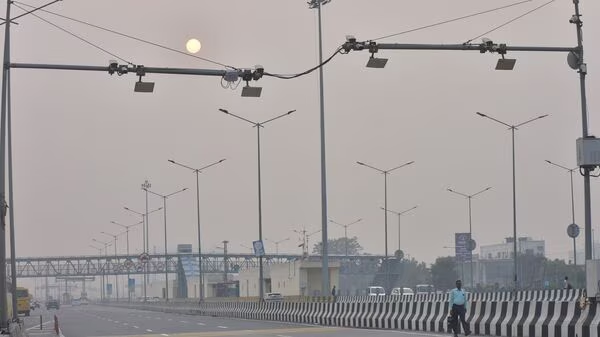Delhi Deploys AI-Powered 4D Radar Interceptors to Combat Traffic Violations

New Delhi, India – Delhi is making a major push toward smarter traffic enforcement. The city is set to introduce AI-powered 360-degree 4D radar interceptors. These will crack down on traffic violations with unprecedented precision. These high-tech systems are mounted on police vehicles. They will automatically detect and penalize offenses without human intervention. This marks a significant upgrade from traditional CCTV surveillance.
How the AI-Powered 4D Radar Interceptors Work
The cutting-edge system combines radar, sensors, AI-based cameras, and automated number plate recognition (ANPR) to monitor traffic in real-time. Key features include:
- 360-degree rotatable cameras for comprehensive coverage
- Simultaneous tracking of multiple vehicles with speed detection
- Automatic e-challan generation for violations like:
- Overspeeding
- Driving without seatbelts
- Using mobile phones while driving
- Riding without helmets
- Triple-riding on two-wheelers
- Fancy number plates
The system is integrated with the National Informatics Centre (NIC) to ensure seamless issuance of penalties.
Trial Run Shows Promising Results
During initial testing, the AI interceptors generated 120 e-challans in a single trial, demonstrating high efficiency. Authorities believe this technology will:
- Reduce reliance on manual policing
- Minimize road accidents and fatalities
- Improve fine recovery rates (currently just 14% in Delhi)
Stricter Penalties for Traffic Violators
Alongside this tech upgrade, the Indian government is tightening penalties for traffic violations:
- Driving license suspension if e-challans remain unpaid for 3 months
- Higher insurance premiums for repeat offenders
- 3 red-light jumps or dangerous driving violations in a year could lead to a 3-month license suspension
Why This Matters
India records 480,000 road accidents annually, causing 180,000 deaths—many involving young two-wheeler riders. Union Minister Nitin Gadkari highlighted that these accidents cost 3% of India’s GDP in economic losses. The new AI-driven system aims to enhance road safety, automate enforcement, and reduce fatalities.
What’s Next?
Delhi’s Intelligent Traffic Management System (ITMS) will soon expand with more interceptors, setting a precedent for other states. With Maharashtra (62%) and Haryana (76%) leading in fine recovery, Delhi hopes this tech upgrade will boost compliance.
Stay updated with the latest in tech and policy—follow our blog for more breaking news!





